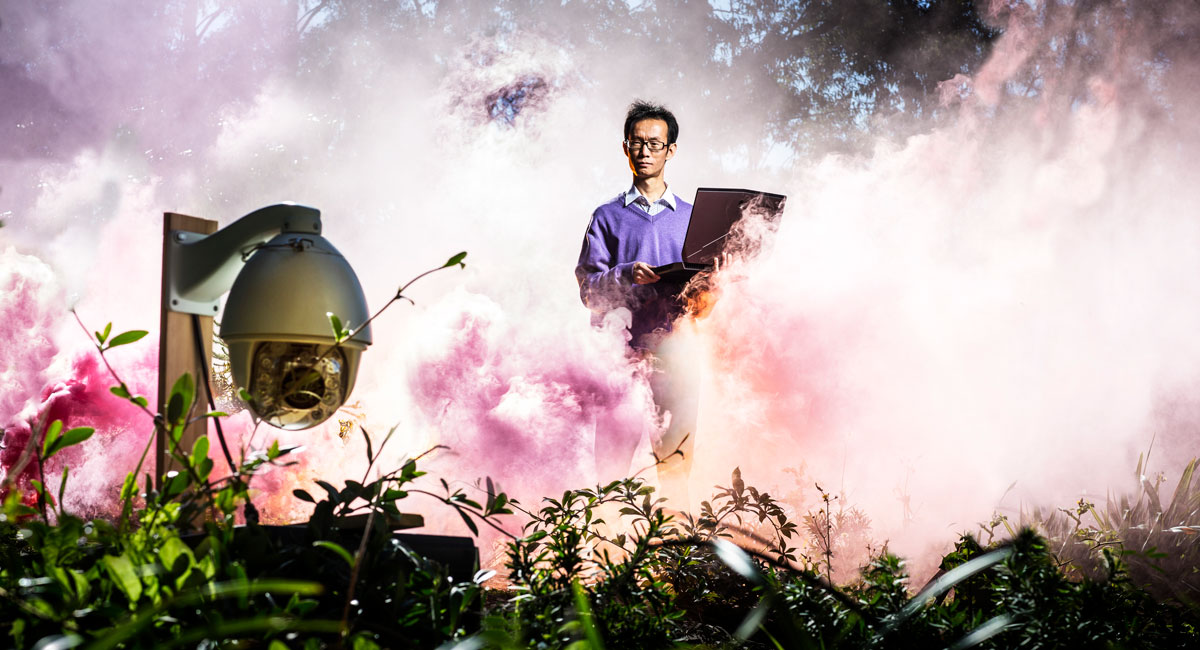August 19, 2016
Video ‘eye in the sky’ keeping fire watch
Vision-based smoke detection is paving the way for early warnings for bushfires.
A video camera that can detect the first signs of smoke could be the key to providing vital early warnings in efforts to reduce the devastating effects of bushfires.
PhD graduate Hongda Tian, from UOW’s Faculty of Engineering and Information Sciences (EIS), has developed a sophisticated algorithm and software that enable a video camera to ‘see’ smoke and provide an alert to remote operators.
Early detection of smoke from fire would enable emergency services to respond more swiftly and effectively, particularly in hot, dry and windy conditions that could quickly turn a small fire into a large blaze.
Emergency services and forestry managers in Australia and overseas often employ human observers who are stationed in lookout towers to monitor remote regions for signs of fire.
However, observers need training and support even in the best vantage points, as terrain features can block visibility.
The method developed at UOW uses image recognition technology – an emerging field in artificial intelligence (AI) – to segment the image and recognise its main features.
Based on the physics of smoke formation, the technology is able to separate the smoke from the background for recognition.
The software can determine the difference between smoke, fog, haze and other similar-looking elements.
In addition, the method doesn’t require a sophisticated camera and it can detect smoke from a single image as well as from video frames.
“With the help of a visual smoke detector, both property damage and loss of human lives from fire, in both indoor and outdoor environments, could be reduced or even prevented,” Mr Tian said.
Camera-based detection systems have been trialled in recent years, yet these showed that the technology at the time was slower and less reliable than human observation.
Less sophisticated camera systems that provide live images to a control room have also been investigated.
These are often hampered by the challenges of providing power to the cameras and a reliable and strong wireless signal that enables operators to control it and to transmit images with sufficient resolution to make smoke identification possible.
“The are two main technical challenges we have addressed in the design of this system,” Mr Tian said. “Firstly, how to reliably differentiate smoke from other objects in images based on its visual properties.
“Some of the visual characteristics of smoke include irregular and deformable shape, irregular motion, diverse color, and varying degree of transparency, which makes visual smoke detection a difficult task.
“Secondly, there is the need to deal with the limitations of devices in real situations. The system should perform well when only limited power supply is available as well as with only basic computing resources and bandwidth.
“Severe and dynamic environmental conditions such as heavy rain and wind were considered in our development, which could pose a threat for detection task.”
The system could also be used in industrial settings such as factories or even car parks where normal smoke alarms, which need to need to be relatively close to the source to be effective, are not practically or economically feasible.
“When used in open areas, these detectors don’t provide information about the location of the fire, its burning rate or other key indicators,” Mr Tian said.
“In any smoke detection system, there is a delay inherent in the transportation of smoke and this is exacerbated in an outdoor scenario where there could be wind.”
The team of researchers, which includes Associate Professor , Professor and Associate Professor , from UOW’s , has spent five years developing the software to its current level of functionality.
The researchers hope to install the system in various indoor and outdoor scenarios for a long-term, real-time surveillance test.
